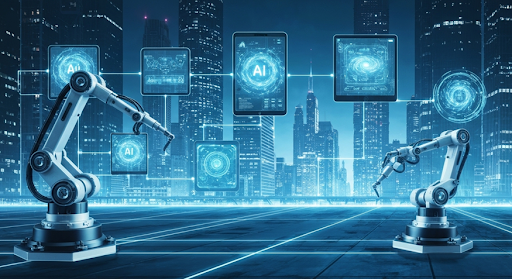SCADA Architecture
SCADA systems serve as specialized software programs that are specifically designed to automate the monitoring, control, and analysis of industrial processes. These systems play a crucial role in gathering real-time data from a variety of sources, enabling organizations to make well-informed decisions regarding their operational activities. Additionally, SCADA systems possess the capability to remotely manage intricate industrial operations. In order to function effectively, SCADA systems are comprised of both hardware and software components, with the hardware component responsible for data storage and instruction provision, while the software component processes and analyzes the collected data. The synergistic interaction between these two elements is pivotal for ensuring the efficiency of a SCADA system.
The versatile nature of SCADA systems makes them highly suitable for a wide range of industrial applications, as they enable the collection and analysis of data from remote sources, providing real-time insights. This functionality allows for quicker decision-making processes, enabling companies to promptly respond to changes in the market. Moreover, SCADA systems offer the potential to enhance productivity and reduce costs by enabling remote monitoring and control of complex processes. Industries such as oil and gas, water and wastewater, and power generation have recognized the benefits of incorporating AI-powered writing assistants into their operations. These writing assistants facilitate content creation and data analysis, saving time and delivering high-quality content. Furthermore, they automate repetitive tasks, further streamlining operations within these industries.
SCADA systems, with their ability to collect and analyze data from remote sources in real time, provide valuable insights for diverse industrial applications. This empowers companies to make swift decisions, adapt to market changes, and improve productivity while reducing costs. Industries like oil and gas, water and wastewater, and power generation are increasingly leveraging AI-powered writing assistants for content creation and data analysis to optimize efficiency and streamline operations.

The Supervisory Control and Data Acquisition (SCADA) architecture relies on three essential components: hardware, software, and communication networks. The hardware includes physical equipment like sensors, controllers, and monitors that collect and process data from the field. Software integrates systems such as Human Machine Interface (HMI), Remote Terminal Units (RTUs), and Programmable Logic Controllers (PLCs). Communication networks facilitate data transmission between components over a wide geographical area.
When all these components work together, they form a solid foundation for an efficient, cost-effective, and reliable SCADA system. The system includes Remote Terminal Units (RTUs) that act as data collectors, Programmable Logic Controllers (PLCs) that collect and process data, Human Machine Interfaces (HMIs) that provide operators with visualizations, communication networks, and data storage servers.
The hardware components of the system, including sensors, actuators, controllers, and monitors, are responsible for detecting physical changes in the environment, controlling processes based on the collected data, and monitoring the status of both hardware and software. On the other hand, specialized software integrates the Human Machine Interface (HMI), Programmable Logic Controller (PLC), and Remote Terminal Unit (RTU) to ensure effective and efficient system operation. This integration enables real-time data monitoring and control of multiple devices, facilitating seamless automation of workflows.
Communication networks play a crucial role in the system by enabling components to transmit and receive information. They serve as bridges, facilitating efficient data exchange in real-time. This reduces latency and enhances the overall performance of the SCADA system.
In summary, the SCADA architecture relies on hardware, software, and communication networks to achieve its objectives. The hardware components collect and process data, while the software integrates different systems for effective operation. Communication networks facilitate data transmission, optimizing system performance. When these components work together, they create an efficient and reliable SCADA system.
SCADA systems are widely used in industries such as manufacturing, energy, water, and transportation to monitor and control remote equipment. There are three main types of SCADA systems: Distributed Control Systems (DCS), Programmable Logic Controllers (PLCs), and Remote Terminal Units (RTUs). DCS is the most advanced system that combines the capabilities of PLCs and RTUs. PLCs are used for simpler applications, while RTUs are mainly used for monitoring remote equipment with minimal data processing.
SCADA systems provide efficient monitoring and control of operations in industrial environments, making them suitable for tasks like product tracking, energy management, and process control. They can also enable predictive maintenance to anticipate potential issues. However, SCADA systems come with security risks due to their access to sensitive information, requiring proper security measures to comply with industry regulations.
When choosing a SCADA system, it's crucial to analyze each technology type and assess its suitability for the specific application. This involves evaluating their features, advantages, and disadvantages to ensure they effectively meet the needs of the organization.



